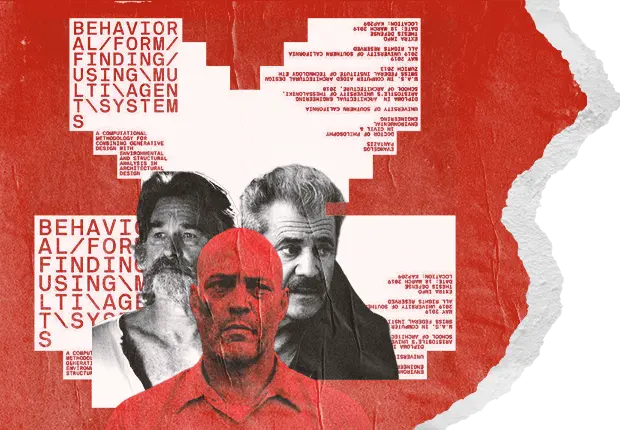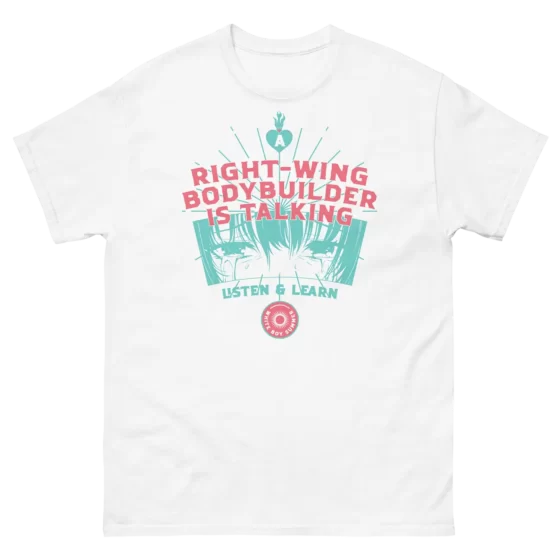Some Notes on the Films of S. Craig Zahler
Heaven may not exist in the films of S. Craig Zahler, but by Christ do we get to see in unremitting detail what a hell on earth might look like. Troglodyte and incestuous cannibals: Bone Tomahawk. A sadistic Mexican mafia using US prisons as bespoke playpen torture chambers: Brawl in Cell Block 99. Sociopathic and ultra-sophisticated bank robbers with an utter contempt for all human life: Dragged Across Concrete—which is, possibly, the first film ever to be named after the aftershock effect its viewing will leave you feeling. In Bone Tomahawk, however, Zahler’s first movie and his most recognisable, he tricks his audience into thinking that they’re already there, in hell, in the film’s very opening moments, when they’re not, and not by a long way.
“There are sixteen major veins in the neck and you gotta cut through ‘em all!”
So explains one murderous brigand in the film’s opening scene. It’s the Wild West. A familiar filmic setting soon to become very unfamiliar indeed. Two down and dirty crims, Purvis and Buddy, having just ambushed and mercilessly killed a bunch of innocents in as grisly a manner as one might achieve in a film’s opening (the foley artist really earned his pay that day), soon stumble upon a sacred tribal site—pagan, incongruous, backwards-looking, though I might just as well be talking about our two murderous crims— and then it happens, unexpectedly, Buddy is killed, not for his vile murders but rather for the unwittingly blasphemous misstep of having trespassed onto a sacred site. Zahler’s led you to believe that you were watching one film, a familiar one, a gritty western of some description and then he pulls the rug out from under you before the titles have even come up. This will be wholly unfamiliar territory from here on in. “This is not the time for womanly imaginings,” snorts Buddy, in one of many of the film’s great lines, seconds before he’s so gruesomely offed. Note how his wisecrack about these so-called “womanly imaginings” might just as easily have served as a warning to the audience, one at risk of being overly relaxed, too ready for some by-the-book genre fare. We see Buddy’s death in the background as a mysterious silhouette seems to be casually amputating him. And then bang—up comes the title, ‘Bone Tomahawk’, followed by dappled light through the branches of trees; a wooden town sign (Bright Hope, population 268, a nod to the theme of faith), and here in this series of calming establishing shots we’re transported to a more tranquil and, well, yes civilised environment. This is the calm before the storm. But a storm is coming. We, the audience, can feel it in our bones.
“They’re a spoiled bloodline of inbred animals who rape and eat their own mothers.”
We don’t know who killed Buddy yet—far worse, we don’t know what killed him—but we know that it wasn’t self-evidently human. As murderers, Purvis and Buddy were certainly lacking some of the trappings of what one would call “civilisation,” but at least they appeared to have belonged to it at some point, whilst this creature which killed Buddy, latterly described as a troglodyte, is something else entirely. The surviving crim, Purvis, having fled for his life to the nearest town, Bright Hope, is therein arrested for the (hilarious) crime of being incongruous with intent to cause mischief and locked up by our hero, Sheriff Hunt. Unbeknownst to Purvis, however, those troglodytes have been following him and want more than a mere pound of flesh for their pains. They kill a stable buck, kidnap a cop, and Purvis too, and, worst of all, they take the innocent and loving wife and town doctor, Samantha O’Dwyer.
“The Valley of the Starving Men: The Troglodytes are said to live there.”
Thereafter, the film is set up as a rescue mission, but it is so much more. This is a film about light versus darkness; civilisation triumphing over savagery; it’s about the redemptive power of love, of finding friendship in the darkest of hours, of the lodestar of faith, and it’s about the ability to overcome all manner of unspeakable evildoing. It’s also a film about men. It’s unashamedly a film about men.
“Many women invite me over for dessert.”
The introduction of every character, major or minor, feels like the beginning of a Tolstoyan arc that could run and run and take the audience happily along with it for the ride. The Professor, a Native American Indian, who manages to convey quiet authority, dignity, and a supercilious contempt for all the whiteys around him, is in only a single scene, wonderful as it is, and then there’s a fantastic Sean Young cameo—remember her?—who arrives in a moment of grand pomposity, speaking for her tiny career cuck of a husband, nominally the town’s mayor, before she also disappears along with him. It says something of the film’s greatness that even the minor characters leave a strong impression on the audience. No one is nondescript. Everyone is vital.
“Say goodbye to my wife; I’ll say hello to yours.”
Without question though Bone Tomahawk’s greatest character is its protagonist, Sheriff Hunt. Kurt Russell is an actor famed for Hollywood comedic badassery—the genius of Snake Plissken (Escape from New York) or Jack Burton (Big Trouble in Little China) should spring easily to mind—however, in Bone Tomahawk we have Russell owning a role with such quiet understated authority, he can’t help personifying masculine responsibility. To give one example, in a lovely touch of civility, after telling a doting husband outside his home that his wife has been abducted, Sheriff Hunt still has the presence of mind to go on and close the husband’s door for him, as the panic-stricken Cowboy hobbles off on crutches to the Learned Goat to find out how he can assist in his wife’s rescue. Zahler’s heroes are kind. Responsible. Empathetic. And Sheriff Hunt, the audience now knows, will be defined by his humanity first, his heroism second. His kindly way of dealing with his far less able subordinates, resolute understanding of human frailty—his, as well as others—imbues him with a heroic power that lesser filmmakers might be unable to capture. Or worse, may not think worthy of being captured. It’s clear that Zahler’s version of masculine heroism will have its critical moments but will is also chug along beautifully in the quieter moments too.
“You okay?”
“South of okay, north of cancer.”
Brawl in Cell Block 99 seems on the surface to be a complete departure for Zahler: a prison drama set in a modern-day US bears little comparison to a late 19th century western of Bone Tomahawk. Dig a little deeper, however, and you’ll soon see many a familiar theme start to surface. Here In Brawl in Cell Block 99 we have another film about men enduring all manner of hardship to protect women, and light trumping darkness, civilisation over savagery, and we have another film about faith. Opening the film, a close up of the back of our protagonist’s bald head thrusts the huge crucifix tattooed onto said head firmly in our faces. Its meaning is two-fold: here is a man who believes in a higher force and doesn’t much mind you knowing about it; secondly, messing with this man would be akin to a haemophiliac taking a cheeky dip in a shark tank: very, very unwise indeed.
“How was work?”
“Yeah, it was.”
As Brawl in Cell Block 99 places audiences in a contemporary US working-class setting, one might be forgiven for thinking that a conception of hell comparable to Bone Tomahawk’s ultra-violent troglodytic ending might be impossible. Think again. Brawl in Cell Block 99 takes hardship to a whole new hellish circle—as Bradley (Vince Vaughan, disowning decades of wet romcoms with a tough-guy shoulder shrug), begins on the straight and narrow, loses his job, almost loses his wife (the very meaning of his life), and pummels his car to bits with his bare hands before resuming the criminal way he knows best. Thereafter, it’s a steep descent, one rung at a time, into a new contemporary kind of hellish horror. Cell Block 99 exists as a prison within a prison, a veritable Russian doll of violence. “I suspect that Amnesty International would frown upon the contents of this room,” says Tuggs (Don Johnson), the sadistic Warden in one of many hardboiled moments of darkly comic irony.
“78 days.”
This is a film where faith and faithfulness can keep a man alive. In a touching moment early in the film Bradley forgives his wife’s infidelity, seeming to blame the shitty hand that they’d both been dealt rather than her choices, and it’s with the realisation that Uncle Sam is a bit of a sham that he decides to resume his criminal work with a former employer, Gill, in order that he can start and raise a family in a kinder and safer place (for his family if not for him). Bradley is a man who’s tried to take his chances on the honest path, but the path has failed him, as it has so many others. The death of the American Dream is writ large over so much of the film’s early scenes. The Stars and Stripes flying outside Thomas’ hovel early in the film when he’s on the straight and narrow are there, still, outside his later more salubrious digs, suggesting, darkly, how honesty and hard work count for nothing in such a world as his, and those ill-gotten gains sure as hell pay a lot better.
“Every once in a while, I see a man in that chair who could just as easily be on this side of the table…a man principled…who had a run of bad luck and just went the wrong way.”
“I’m not gonna talk.”
Once convicted Bradley’s incarcerated in a prison, humane enough, but he’s blackmailed into getting himself incarcerated in another, far darker and more tyrannous than before so as to carry out an assassination, and yet even from there he has to force himself further down into the hidden bowels of the institution in pursuit of his prey. In Bone Tomahawk, evil seeks to corrupt the godly by taking away those who he loves; in Brawl in Cell Block 99, they’ll go beyond the mere kidnap of the damsel: they’ll threaten to decapitate her fetus in utero. Hell, it really is other people, and hurting a nigh on unhurtable man such as Bradley takes some creative doing: it’ll take a particularly rarified form of malevolence. He’s thus compelled into lashings of violence to save an innocent wife and an unborn life. How can a film be so moving, so imbued with the power of faith, and yet so ultra-violent? His last words are “78 days,” the time left until his kid is born. His life was about taking it, and yet the giving of life was ultimately his guiding light. A beautiful touch. Always at the heart of Zahler’s films is an understanding of a sense of masculine sacrifice; his heroes having to fall for others to live.
“It’s bad like lasagna in a can.”
Dragged Across Concrete, Zahler’s third and most overtly political film, opens with an ex-con returning home to find a red light on in a window and his mother turning tricks. It’s a blood-red symbol of a domestic hell—a mother servicing men for money while her crippled son plays computer games in the next room—but we’ll have this moment very much in mind by the time of the film’s end: here, the same mother will be receiving a massage, paying for someone’s touch rather supplying it, and Zahler’s choice of a brightly lit all-white setting to end the film on is telling. In Dragged Across Concrete, Zahler suggests, heaven can exist, but it’ll comes at one hell of a cost.
‘Do not prioritize money over having a heartbeat.’
The ex-con in question is Henry Johns (Tory Kittles), out of prison and down on his luck and, like all of Zahler’s heroes, contending with an anvil-weight of responsibility: There’s the aforementioned junkie mother turning tricks, and his young brother, Ethan, wheelchair-bound and putting up with a life in an urban dystopia. We feel for him. The introduction of our cop heroes on the other hand, Brett Ridgeman (Mel Gibson at his growly best) and Anthony Lurasetti (Vaughan: cynicism personified), is far more complex and the two are far less sympathetic. Two years before the BLM riots of 2020, Ridgeman, in one of the film’s taut opening scenes, stands on a Mexican drug dealer’s head to restrain him: “Shit—that’s cutting off my circulation!” groans the perp in question on the floor of a fire escape, eerily prescient of another line that’ll be used to justify all manner of murder and mayhem in a few years’ time. Zahler knows where the race-related trip wires are, but they simply don’t terrify him the way they do other, lesser directors. On finding a gun on the drug-dealer’s Spanish-speaking girlfriend, our protagonists continue their unpleasantness: “Can I have something to wear?” she asks, not unreasonably, her being all but in the buff. “Sounded kind of like a dolphin,” comes Lurasetti’s snarky reply. We should be rooting for them—not hard to do when it’s Mel Gibson and Vince Vaughan in the lead roles—but we don’t, not yet, not until we’ve seen more of the bigger picture.
“Like cellphones and just as annoying, politics are everywhere.”
After a nosy neighbour secretly films Ridgeman’s boot on the dealer’s head on the fire escape, both cops are destined to end up on the news as public hate figures. Some form of disciplinary action is thus inevitable. Ridgeman’s former partner, now boss, Chief Lt. Calvert (Don Johnson) who’s been tipped off by a contact at the channel due to run the incriminating footage, shares his thoughts on the matter and they read like a direct comment on the times, a sardonic state of the nation address: “Being branded a racist in today’s public forum is like being accused of communism in the ‘50s…the entertainment industry, formally known as the news, needs villains;” to which Lurasetti responds with his own observation: “There’s certainly nothing hypocritical about the media handling every perceived intolerance with complete and utter intolerance.” That the two men commenting on the zeitgeist should utter these lines with a silent and sombre Mel Gibson in attendance, his own cancellation by unforgiving media inquisition looming in the back of our minds, gives the scene a lovely meta quality.
“…I don’t politic and I don’t change with the times. And it turns out that that shit’s more important than good, honest work.”
Behind the men, Chief Lt. Calvert’s panoramic view high over an unnamed American city, brightly lit for the stark contrast it has to the bleaker preceding moments of the film, emphasizes how far up in the world he’s travelled, and how low down in it Ridgeman, his former partner, now finds himself. Calvert predicts Ridgeman’s demise: “When we worked together, you weren’t that rough. It’s not healthy for you to scuff concrete as long as you have. You get results, but you’re losing perspective and compassion. A couple more years out there you’re gonna be a human-steamroller, covered in spikes and fueled by bile.” Ridgeman and Lurasetti are suspended, and it would take a heart marinated in treacle to fully sympathize with them. But you will. And fully. The anvil-weight of responsibility sits heavily on Ridgeman’s shoulders too, for, as James Brown once explained, it may be a man’s world out there, but it wouldn’t be nothing without a woman or a girl, and in Ridgeman’s case it’s both: he’s supporting a wife with multiple sclerosis, desperate to chip in but incapable of working, and then there’s his teenage daughter to protect, bullied by a group of black teens for the perceived crime of being a cop’s daughter. In Lurasetti’s case there’s his girlfriend who he wants to make his wife. One man has family troubles, the other has the economic trouble that comes in trying to start one.
“Vogelmann, I don’t know that name.”
“Well, he’s not local.”
Race is a key theme in Dragged Across Concrete, but in our early scenes there are no black-and-white certainties when it comes to telling good from evil or right from wrong. Ours is a world of greyness where moral ambiguity abounds. There are criminals compelled into a life of crime, and there are cops on the wrong side of the law. It’s the anvil-weight of responsibility which makes so much of what happens understandable, and even justifiable. When true evil does arrive on our screen—with a bang and a whimper—it will be instant, indisputable, and there will be no ambiguity. With Ridgeman and Lurasetti’s use of ‘excessive force’ playing on a local-convenience-store television, watched by a shop keeper—contentedly chugging away on a cigarette—in walks a man head-to-toe in black special-op fatigues, pointing a submachine gun at him. Here, like the entrance of the troglodytes in Bone Tomahawk, so stark is the shift in tone it’s like he’s wandered in out of another film. Nothing of the intruder but the lips, which offer the shop keeper five seconds to comply, is visible to the naked eye. Trying to defend himself, the shop keeper is gunned down, as is a random customer who wanders in. Afterwards, the casual and indifferent strut of the killer suggests something detached, oblivious to the value of human life. Thereafter the CCTV takes a shower of bullets, rationally enough, then the drinks cooler, the crisps stand, and the television, which is still running the news report on the topic of police overreach, the by-now infamous “Vasquez footage.” No—Zahler seems to be implying in this shower of bullets—this is what excessive force looks like.
“I swear on the life of our child that I will go to work after I have touched him.”
Dragged Across Concrete soon brings its narrative to a halt to turn our attention to Kelly Summer (Jennifer Carpenter), agoraphobic, tied to her home and her new life as a mother, and the story seems to linger on her inexplicably, opening a new narrative strand that’ll lead us to an unspeakably horrific bank heist. Think Heat peopled by a cadre of nihilistic psychotics. When we first see her, she’s outside her flat, desperate to convince her stay-at-home husband to let her back inside so that she might be with her child. “My job is so stupid. I go there and I sell chunks of my life for a paycheck, so that rich people I’ve never even met can put money in places I’ve never even seen.” They’ve made an economic choice—or perhaps he has—a logical one, as she makes more money than her husband ever will, and it’s therefore only rational that she should be the one to leave her baby with him and for her to be the breadwinner. It’s a commonsensical decision; the film invites us to see it as an awfully ill-fated one.
“How am I supposed to sit at my stupid desk and talk about bank accounts when my baby is here?”
We’ve seen our protagonists and we’ve seen the villains. Here, ladies and gentlemen, is our victim (in waiting), the film seems to be saying. Against the pull of her maternal instincts, she eventually does go back to work, and before entering her workplace, rallies herself, meeting her own eyes in her reflection in the bank entrance door. Meanwhile, in the same lingering shot of her reflection, a van slips by in the background carrying her soon-to-be executioners. Moments after an emotional return to the world of work, the bank heist begins. With sub-automatic weapons trained on the staff, Kelly Summer’s hands are up, and it’s she who’ll cuff everyone as per the bank robber’s cold command, and it’s she who’ll have her hand blown off, too. The fingers that reached out as a mother to hold her baby, one last time, are obliterated in the workplace in a Grand Guignol mess of gore. “Will you make sure my baby gets this,” she says, holding up a baby’s mitten, ending the hand-motif in a final frail plea. We already know the answer.
“Don’t pop his liver, it’s the worst smell in the world, black guys especially.”
What happens in the bank is so heinous that it will create a civilizational bond uniting criminal and cop for the film’s dark and violent climax. “Remove his stomach, so that the key doesn’t fall into his entrails,” Vogelmann orders in the back of van, sounding less human with every ice-cold utterance. Shining a light down into the deepest, darkest depths of evil is one of Zahler’s recurring themes. What does true evil sound like? Perhaps it’s like the troglodytes in Bone Tomahawk, squawking into the night, or maybe it sounds like the mafia, indifferent to human suffering; and here it sounds like Vogelmann in the back of a van issuing his cruel anatomical commands.
“The blood is gratis.”
Dragged Across Concrete is a film defined by the two-shot—two men seated in cars, in stake outs or in pursuit of others—and it’s therefore only right that the film should end with the criminal, Johns, and the cop, Ridgeman, side-by-side in a car in a single frame. They’re uncomfortably close and yet somehow miles apart. It’ll take a leap of faith to keep them both alive. The film closes on the simple message: a man should stay true to his word, and never lose his capacity to trust in another. They’ll have to bury their prejudices to survive; tragically, one of them can’t bring himself to do that.
“After all this is finished and forgotten, I’ll come back and bury you right.”
Craig Zahler may be the only writer/director reacting to the cultural tyranny under which cine-literate filmgoers have been suffering this past decade. His films are a powerful response, consciously or otherwise, to the vapid gatekeepers who’ve been treating anything without a far-left “message” as beyond the pale. His is a refreshingly counter-cultural voice, an oasis in a desert, an antidote to all the casual misandry and girl-bossy slop we’ve had ladled onto our plates, into our multiplexes, onto our Netflixes, and if any of this is news to you, I recommend you check out his back catalogue—and get to it quick —before The Bookie and the Bruiser is released later this year and you find yourself playing catch up with the crowd.
Simon Rowat’s latest novel, HELL ISN’T OTHER PEOPLE—IT’S YOU!, described in a Conservative Woman review as a “literary landmark on the war on woke,” is available at Amazon, and he can be found on X at @SinjinRutlish
































